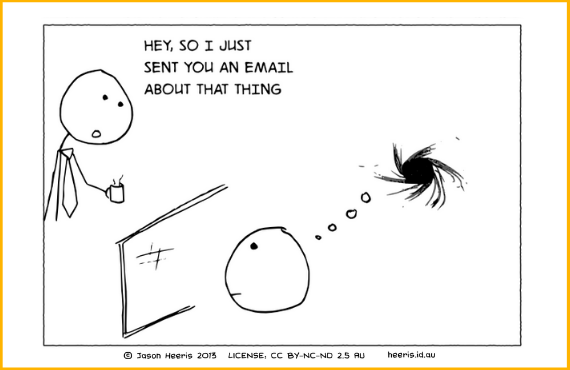For most of us, interruptions are something to be avoided. They disrupt our focus and delay our tasks. But for an agile developer? Well… it’s complicated.
Agile approaches encourage regular feedback and collaborative problem solving to an extent not practiced in other parts of a business. At the same time, developers crave deep focus time to develop and troubleshoot code. So as a business leader, how can you make sure your teams’ interruptions are a net-positive experience?
A 2021 study followed four agile software development teams (three using Scrum, and one using a Kanban approach) to understand the impact of disruptions at both the team and individual level. They looked at universal interruptions like meetings, emails and desk drop-ins, as well as work impediments like errors, backlog changes and poorly specified requirements. Here are the strategies they recommend to help your agile teams manage interruptions.
1. Agile for non-agiles
Your agile teams are truly customer-focused, and this can mean both clients and your business departments. They want regular input and feedback to ensure they meet customer needs, are aware of problems and can respond to changing factors.
Researchers found developers respected interruptions from customers and generally prioritised customer communications. But, feedback often came in the wrong way, at the wrong time. Steady streams of feedback can not only disrupt an individual’s flow but can also compromise a whole team’s project timeline. Instead, the flow needs to be channeled.
Start by educating your broader employee base around the agile process at a high level. Explain the cycle of planning, sprints and reviews, and how it relates to your agile team’s preferred times and channels for feedback. For example:
- Should customers attend stand-up meetings, raise a ticket or send an email?
- Who decides if feedback is urgent, and how should that be communicated?
- Is someone collating customer feedback to prioritise and assign at the right times?
- Are there certain times of day when an agile team member shouldn’t be disturbed?
- What changes during a sprint?
Even a basic understanding of agile work preferences will enable your staff to interrupt with empathy.
Quantifying time associated with interruptions can also be eye-opening for the broader business. This study reports a team reducing unplanned work by 50% by demonstrating the costs of ad-hoc customer requests.
2. Provide tools and encourage formal processes
The study identified that agile teams had an informal understanding of which communication tools to use, when. Group chat was generally used for quick input or calls for support, a ticket system structured more formal requests, and email was used for external stakeholders.
Real-time or batched?
Developers rely heavily on group chat as a place for quick and generous support. Researchers found there was an unspoken expectation that chat responses would be immediate, enabling the asking member to resume work quickly. Some interviewed developers remained permanently available on chat to access and provide help. However, there is a cost to those intermittent dings and pop-ups.
Basecamp founder Jason Fried describes group chat as “the modern communications conveyor belt that never ends, divides your attention, fractures your time, and chains you to FOMO”. Ashley Whillans quantifies the problem in Time Smart, showing how nine quick check/reply actions can fragment an otherwise free hour into unpredictable chunks as short as 5-minutes. These chunks are difficult to devote to meaningful work.
In comparison, requests via a ticketing system or email are planned interruptions. Rather than fragmenting time, they can be batched and addressed when the right team member is ready. Using these channels gives agile teams more control over their time.
Document it
Are those unspoken rules of communication written down anywhere? Creating a communication playbook can go a long way towards aligning practices and expectations across teams. Researchers highlighted the importance of following procedures to avoid interruption overload, as well as reducing disruption when onboarding new team members.
GitLab’s Head of Remote, Darren Murph, describes documentation as essential for enabling scalable asynchronous work that mitigates constant interruption. He authored GitLab’s remote playbook, which has enabled onboarding and collaboration between 1,300 remote employees across over 67 countries (including numerous agile teams).
3. Provide autonomy in their environment
Agile encourages self-organising teams, and de-centralised decision-making. This means teams and individuals should be empowered to structure their own time and space as much as possible.
Where?
Researchers considered options for remote and co-located teams, and the trade-off between disruption and collaboration. Some interviewed developers preferred to work at the office, because they valued the shared breaks to informally troubleshoot together. Others worked from home during defined focus times. The study recommended that individuals should be free to choose what works best for them.
When?
All teams instigated some form of deep work time, where teams could expect an interruption-free period to get in flow. However, this was a small proportion of total work time. One scrum master explained his team got 80% of their work done before 9am, because that was the only time they could concentrate undisturbed.
Timeboxed deep work sessions are often an underutilised strategy. During the workday, developers can signal their focus time by online status, but physical signals (like the red stop sign recommended by Indistractable‘s Nir Eyal) may be necessary for those outside their online channel. Synching deep work time is a common approach to help set expectations that inboxes (and maybe even chat windows) will be closed. Timeboxing was found to be more important for Scrum teams, where sprints were generally longer than in the Kanban team.
Non-traditional work hours are also an effective solution for achieving the quiet and energy necessary to get in flow. Just make sure this doesn’t result in 10-hour work days or your team will soon burn out.
Managing interruptions is vital
Interrupting an agile developer can simultaneously empower and stress, improve clarity and reduce quality. Optimising the balance for your team can create a step-change in their effectiveness and productivity.
Researchers concluded “not being able to manage interruptions might explain the high percentage of dysfunctional agile teams.” Don’t let your team be one of them.

TimeBeings helps start-ups smash their goals sustainably. Data-driven, research-backed, guaranteed.

Book a discovery call to chat with Jenna about your vision of time well spent.

